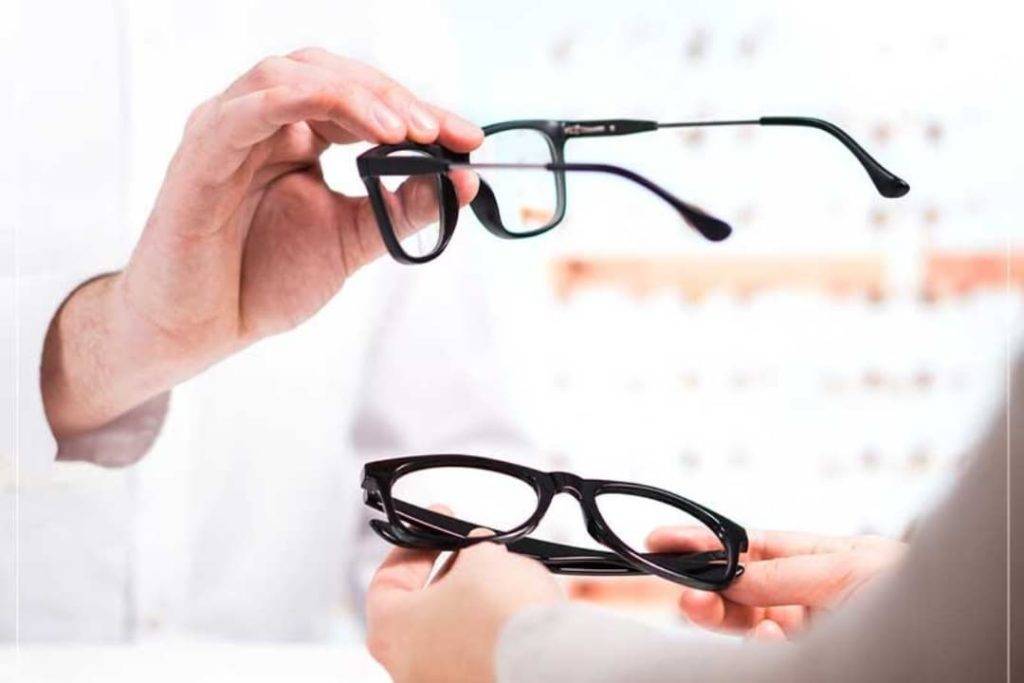Our eyesight gradually deteriorates with age, starting with presbyopia (loss of reading vision), and ending with cataracts (clouding of the crystalline lens). The quality of our daily lives can be significantly impacted when we can't see clearly. Multifocal lenses are useful in this situation. For people who struggle with several vision issues, these lenses are ideal. They typically have prescriptions for nearsightedness, farsightedness, and intermediate distances. Do visit the best optical shop near you for the best multifocal lenses.

If you have problems seeing both close-up and distant things, your optician or eye specialist may recommend multifocal lenses. When reading or writing, they could be suggested for people who experience headaches, eye tiredness, or both. You might require multifocal lenses if you need to hold reading materials at arm's length to read the text clearly or if the quality of your vision varies depending on the time of day.
Our eyes lose the capacity to quickly move between distant and up-close objects as we get older. You might want to think about progressive lenses or multifocal lenses depending on how your eyes are aging. For adults over 40, multifocal lenses are frequently given to treat presbyopia, a prevalent ailment. Some youngsters and young adults with eye teaming or focusing issues that lead to eyestrain when reading prefer multifocal lenses. You can switch between activities without having to replace your glasses thanks to multifocal lenses. that is; if someone uses one pair of glasses for reading and another pair for distance, they can use a single multifocal lens.
Bifocal Lenses
Bifocal lenses are likely necessary for those who have trouble seeing objects both far away and up close. Bifocals can be worn as both reading glasses and eyeglasses for vision correction. These lenses have a prescription for distance vision in the upper half and a prescription for farsightedness in the lower half.
Trifocal Lenses
Trifocal lenses fix three vision issues as opposed to two. Trifocals' upper and lower parts handle nearsightedness and farsightedness, respectively, while their central half corrects intermediate vision.
Progressive Lenses
Each segment of the lens is divided by lines in bifocals and trifocals. Users can easily switch from one correction to another because of progressive lenses' steady power changes from top to bottom. Compared to trifocals and bifocals, multifocal lenses are typically lighter and thinner.
You can see well again from a distance, up close, and anywhere in between thanks to multifocal contact lenses. But getting used to them can take some time. It is usual to experience blurry distance vision or shadows or 3-D pictures when wearing any form of multifocal contact lens for the first time.
To view objects at various distances, you might purposefully need to move your eyes to various locations on the multifocal lenses. Patients who are new to wearing multifocal lenses frequently experience some distortion or vertigo.
Additionally, you might need to hold your book, newspaper, or magazine, as well as position your head, to read comfortably. By doing this, you'll be able to concentrate your vision through the multifocal lenses' magnifying portion.
To assure your comfort while wearing your multifocal lenses, your eye doctor will need to collect exact measurements. Since you normally look down to read, bifocals are positioned so that they are in line with your lower eyelid. To guarantee that the upper line of the intermediate portion is in the same location, trifocals must be placed higher. Wearers can see clearly when using both their distance and intermediate vision thanks to this.
Like a new pair of glasses, it will take some time for their eyes to get used to this look. Even so, it can take their eyes four to six weeks to adapt. Decide on a week for the first follow-up appointment and alter as necessary.
Wear your multifocal glasses regularly if you just started using them. Your eyes will be able to adapt to the lenses more quickly as a result. When you're going outside during the day, wear them. Bifocals and trifocals can be worn by those who want to adjust more gradually, especially those who have never worn corrective lenses in the past.
You might find it more comfortable to read if you hold your reading material at least 16 inches away from your eyes. When reading, look through the bottom of your spectacles rather than the top. You'll need to intentionally discipline your eyes to read without noticeably moving along with your head. To see clearly, move the object rather than your head.
Avoid gazing down while walking with your new bifocals since your feet can appear blurry. Because the lower part of your bifocals magnifies items, making them appear larger than they are, descending the stairs may even be more difficult. When looking down, tilt your head back and concentrate on the top of your spectacles if necessary.
Due to the different magnification capabilities of multifocal lenses, you will typically require a longer time to get used to them. If your new multifocal glasses do not fit you properly, you can find it much more difficult to get used to them. For your eyesight and eye care requirements, you must pick a qualified professional.
A qualified eye doctor will take into account your face's size and shape in addition to the size of the eyeglass frame. When fitting progressive lenses, the lens height is most important. If your glasses hurt or make you uncomfortable, ask our eye doctor to change or adjust them.

Eric Johnson is a Kerala-based eye wear expert and entrepreneur. He is one of the directors of Ejones Opticals, a company dedicated to providing the highest quality eye wear products at the most affordable prices. Eric has been in the eye wear business for over 10 years, and has a deep understanding of the industry. He is passionate about helping people look and feel their best through the right eye wear. Eric is committed to using his expertise to create stylish and functional eye wear that is tailored to each individual's needs.
Address: Unity Complex, Payyanur.
Tele: +91 4985205553
Mobile: +91 8921835063
Address: KSRTC Complex, Payyanur
Tele: 04985203554
Mobile: +91 8848195859